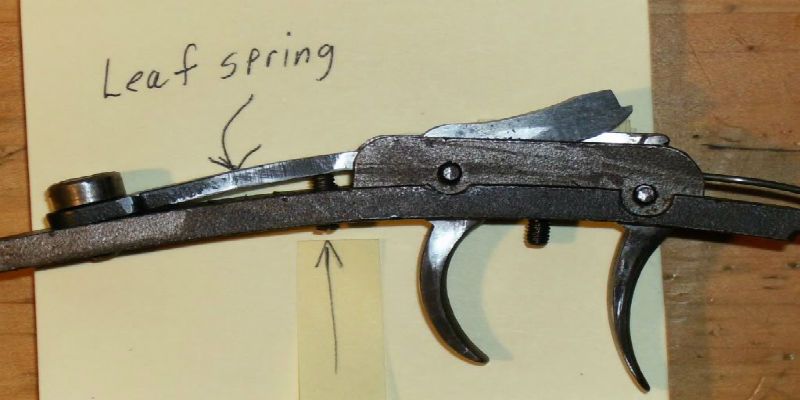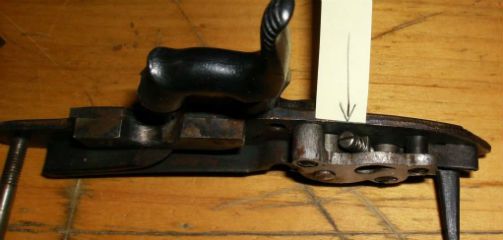Not a problem, but we need to check 2 other adjustments to the trigger and it's best done with the trigger out.
So take the trigger out,,
Got it out? good.
The rear trigger cam is driven by that leaf spring in back,, if that spring isn't down far enough, when the front trigger releases it, it's doesn't have enough power to raise and strike the locks sear arm.
Leave the triggers un-set, tighten the screw in back that holds the leaf in place. As you do that you'll see the rear trigger cam rise.
Now goof around with setting the rear trigger and releasing it with the front trigger,
the rear trigger should be pretty hard to pull, that's good, it's getting it's power from the leaf spring.
Next;
You can go too far, except for help with the next adjustment.
Sometimes that rear cam will be so high in the un-set position,(from spring pressure) that it always presses against the sear arm and the lock won't go into full cock. Not good.
See the arrow underneath at that second screw in the trigger plate? If you turn that screw in,, it will lift the front of the leaf spring and allow the rear cam to drop.
Get that?
So there's kind of a balancing act here,, you want the rear leaf spring's screw turned down so the rear trigger has power, but use the little screw to stop the travel.
Ya gotta goof around with it.
Once you have the rear trigger doing what it's supposed to do,, you can adjust the screw between the triggers to get the pull you want.
There is nothing that say's you have to use the set feature all the time, you can use the front trigger alone any time you want.








